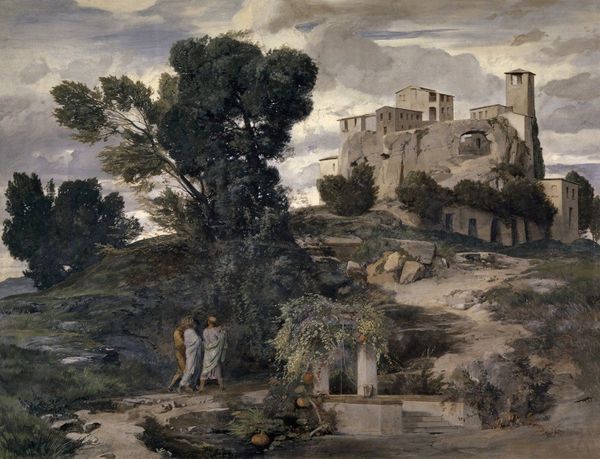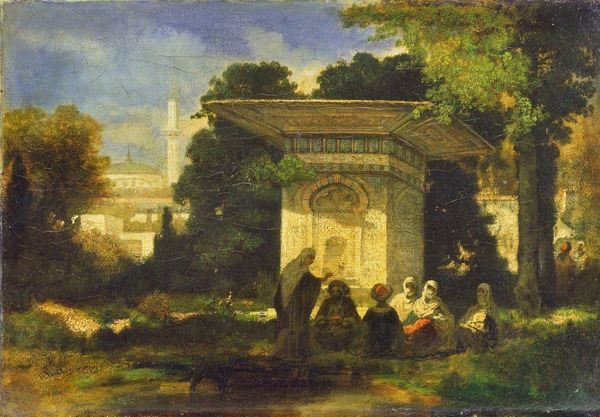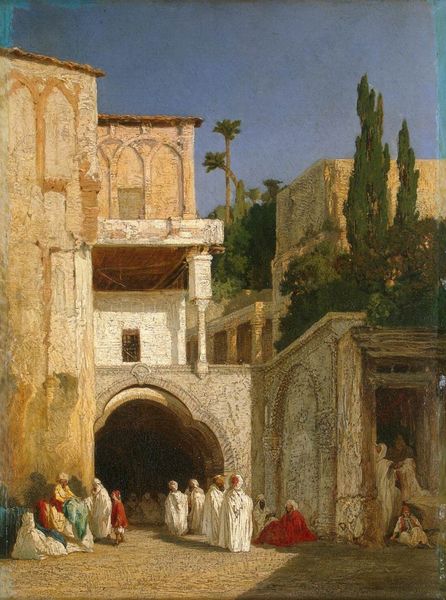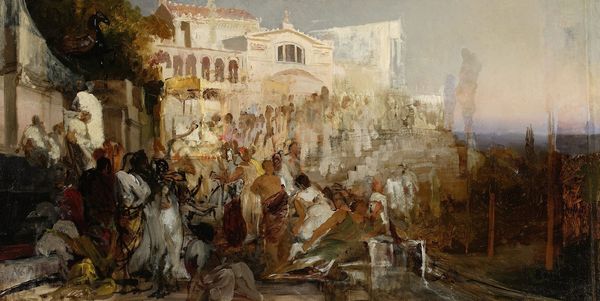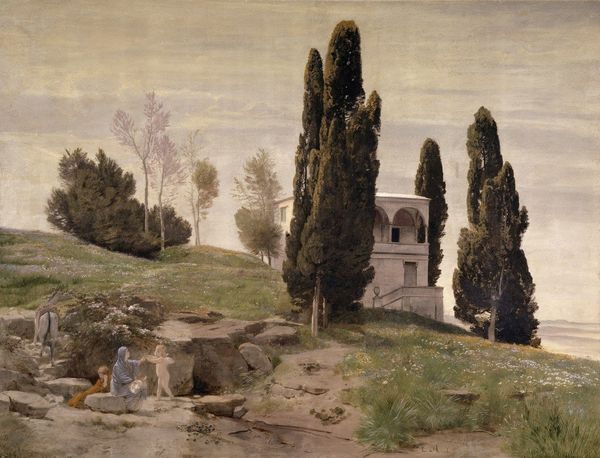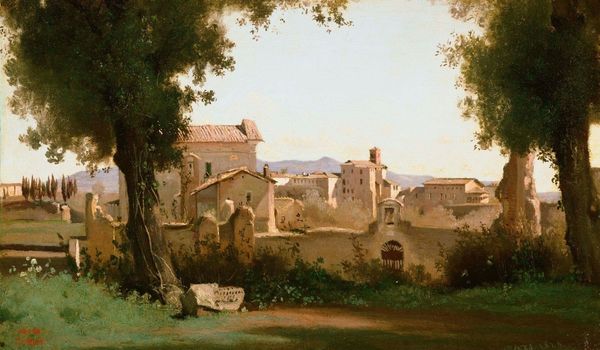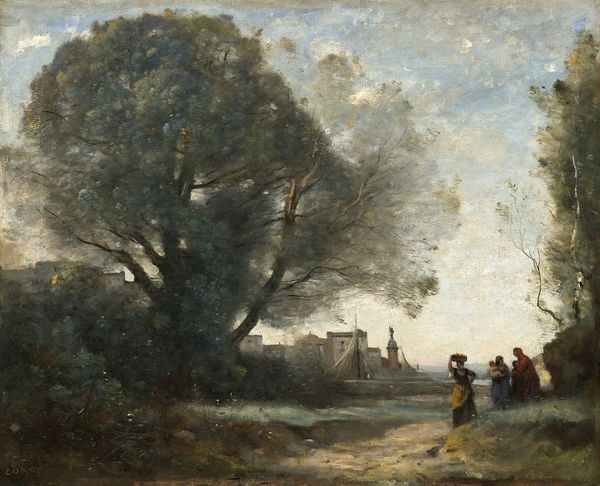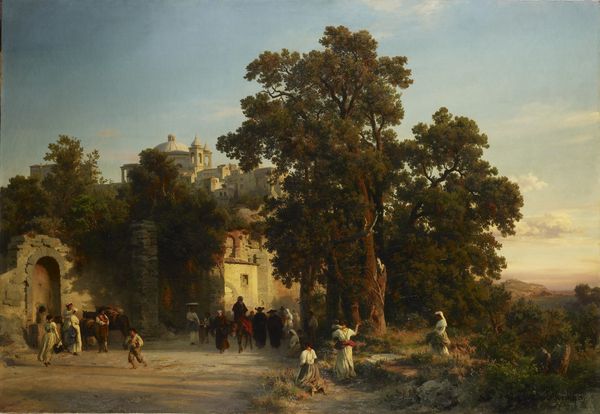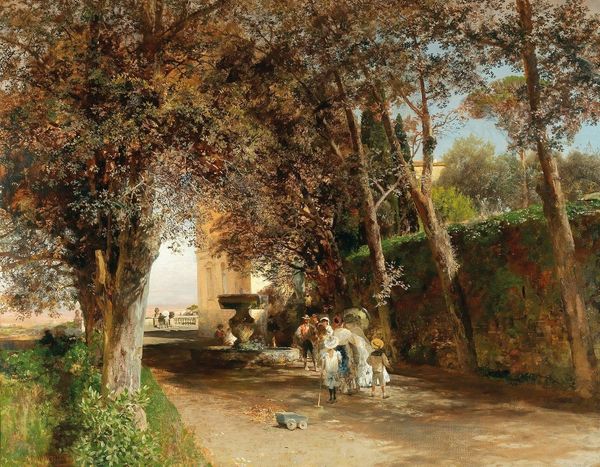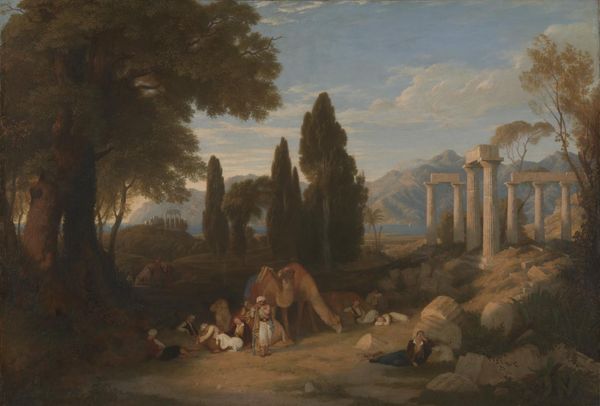
Copyright: Public Domain: Artvee
Curator: Arnold Böcklin painted this evocative scene, "Ancient Roman Tavern," in 1866. It's an oil-on-canvas, blending romantic and realist sensibilities. Editor: It’s almost dreamlike. A classical ruin juxtaposed with scenes of leisure. I'm struck by the hazy atmosphere; it gives everything a kind of sepia-toned nostalgic wash. Curator: Yes, there’s a real interplay of history and imagined experience here. The ruins, the people in togas – they invoke a classical past, but Böcklin's realism infuses it with a contemporary viewpoint and social commentary, particularly class dynamics. Editor: That round temple-like structure has strong symbolic roots. Circular temples were frequently dedicated to goddesses, embodying ideals of harmony, beauty, and communal prosperity. What do you make of the figures clustered around it? Curator: Precisely. It's fascinating how he groups different figures. We see both those relaxing casually on the lawn – presumably citizens of some status – and a more formally attired Roman duo off to the right. These juxtapositions expose disparities in comfort and social access, which I believe invites us to examine the inequalities perpetuated by classicism and romanticism’s obsession with an idealized past. Editor: Good point, the clothing speaks volumes. Note how even the reclining figures have that timeless Grecian drapery in earth-tone colors, almost as though plucked out of myth. Their timeless outfits connect them to a perceived golden age while still firmly reminding us they are, in fact, placed here by our own imaginations looking at the past. That's where the symbolic strength lies; those sartorial signals trigger very specific responses in a viewer familiar with Western art. Curator: It’s as though Böcklin anticipates how we project onto these images, offering a complex view. I see his work as a prompt to confront idealized historical narratives with social realities. How do we reconcile this supposed 'golden age' with those that are always inevitably excluded from it? Editor: I appreciate how he subtly guides our gaze using these known symbolic shorthands. It isn't merely a recreation; it becomes a critical tool for asking tough questions about societal structure across epochs. Curator: A point well made – his artistic rendering opens these critical inquiries, prompting a reflection beyond the purely aesthetic domain. Editor: I’ll certainly remember that tension next time I’m presented with art steeped in Greco-Roman reference points.
Comments
No comments
Be the first to comment and join the conversation on the ultimate creative platform.
